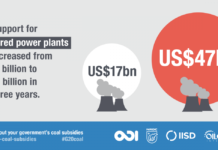Because it was deemed so very important for human health and happiness, for the first 20 years of its growth and expansion, renewable energy technologies and the engineering procurement and construction of power plants have had significant financial assistance in the form of government research grants, tax credits and other subsidies.
So, yes, this initial growth and ‘proof of large-scale energy production performance’, did cost tax paying citizens of the world a fairly pretty penny.
However, today, solar and wind projects built today are quite cost competitive vs. their traditional fossil fuel counterparts: coal & natural gas. Many industry experts now hold the view that going forward, the industry as a whole will be self-sustaining.
Specifically, there are now hundreds of MW- and GW-scale projects being built worldwide that require no tax incentives or other subsidies to be profitable. There are utility scale solar projects now being installed at $0.02 to $0.03 per kWh, with some predicting the cost approaching $0.01 mark within 5 years.
And what of government subsidies to the fossil fuel industries? As the graphic above illustrates, the G20 subsidies in the coal industry alone have grown from $17Bn to $47Bn in just three years.
Furthermore, if one takes into account the TRUE cost of burning fossil fuels to produce heat, electricity and human mobility, we will quickly realize that solar, wind, geothermal and other renewables far outperform their dirty predecessors in any financial analysis.
Some estimates are in the $TRILLIONS in worldwide mitigation and remediation costs of dealing with the effects of climate change, and the human health care costs associated with burning fossil fuels.
Of course, what is the ‘price’ we plan on assigning to an entire nation of people being uprooted from their homelands and forced to move to higher ground ? What of the inhabitants of the low-lying Caribbean, South Pacific or Maldive islands, the Netherlands, Bangladesh, Florida, the list goes on an on.









